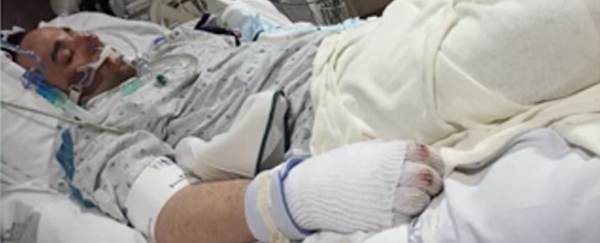You might not fancy your chances of surviving if you had been lying unconscious in the snow for half a day - and ordinarily you'd be right not to - but The Washington Post has the astounding story of a Pennsylvanian man who was brought back from the brink of death because his body was frozen in a snow drift.
Now, don't jump to conclusions: we haven't stumbled across the secret of cryogenic freezing just yet, and for the time being you can't sign up to put your body into suspended animation. But what the experience of 25-year-old Justin Smith proves is that in the right conditions, freezing cold temperatures can keep death at bay for just a little bit longer.
Smith had been walking home from an evening out, when (he thinks) he tripped over and landed in the snow. When he was discovered around 12 hours later by his father, Smith's body temperature was lower than 20 degrees Celsius (68 degrees Fahrenheit), his face was blue, and there were no signs of a pulse or a heartbeat.
"All signs lead us to believe that he has been dead for a considerable amount of time," a paramedic on the scene reported back in a phone call. The coroner was called and Smith's father phoned his wife to pass on the bad news.
Then, something miraculous happened, thanks to the quick thinking of Gerald Coleman, the emergency department physician on duty at the nearby Lehigh Valley Hospital that day.
"My clinical thought is very simple: you have to be warm to be dead," Coleman told the local newspaper. "Something inside me just said, 'I need to give this person a chance.'" Coleman ordered the paramedic to begin cardiopulmonary resuscitation (CPR) procedures, which continued for 2 hours. Smith was eventually transferred to another hospital and had warm, oxygenated blood pumped into his body.
Early in the evening, his heart began to beat on its own again.
The case highlights a changing approach to cases of hypothermia: namely that a low body temperature doesn't necessarily mean resuscitation attempts are going to be futile.
The freezing process - as long as it happens at the right speed - can slow down the body's metabolism and protect it against the other harmful effects of exposure. The frozen cells don't require as much oxygen, and so this state of suspended animation can continue for several hours before someone is beyond recovery.
As long as the heart hasn't stopped completely and CPR is used immediately, people can recover (as Justin Smith's case proves). He lost two fingers and all his toes to frostbite, but he otherwise made a full recovery. A 2012 review article found that 50 percent of hypothermia patients treated with extracorporeal membrane oxygenation or ECMO (as Smith was) were able to recover, even if they'd been in cardiac arrest for extended periods of time.
"We may have witnessed a game-changer in modern medicine - medicine moves forward in extraordinary cases," says Coleman. "[Smith's] survival is a paradigm change in how we resuscitate and how we treat people that suffer from hypothermia."
Some doctors believe the process of artificially chilling the body to preserve it and then warming it up again after surgery may be enough to save the lives of those suffering from gunshot wounds, knife wounds, or any injury that interrupts the flow of blood to the brain, though trials of this procedure are currently at a very limited stage.
